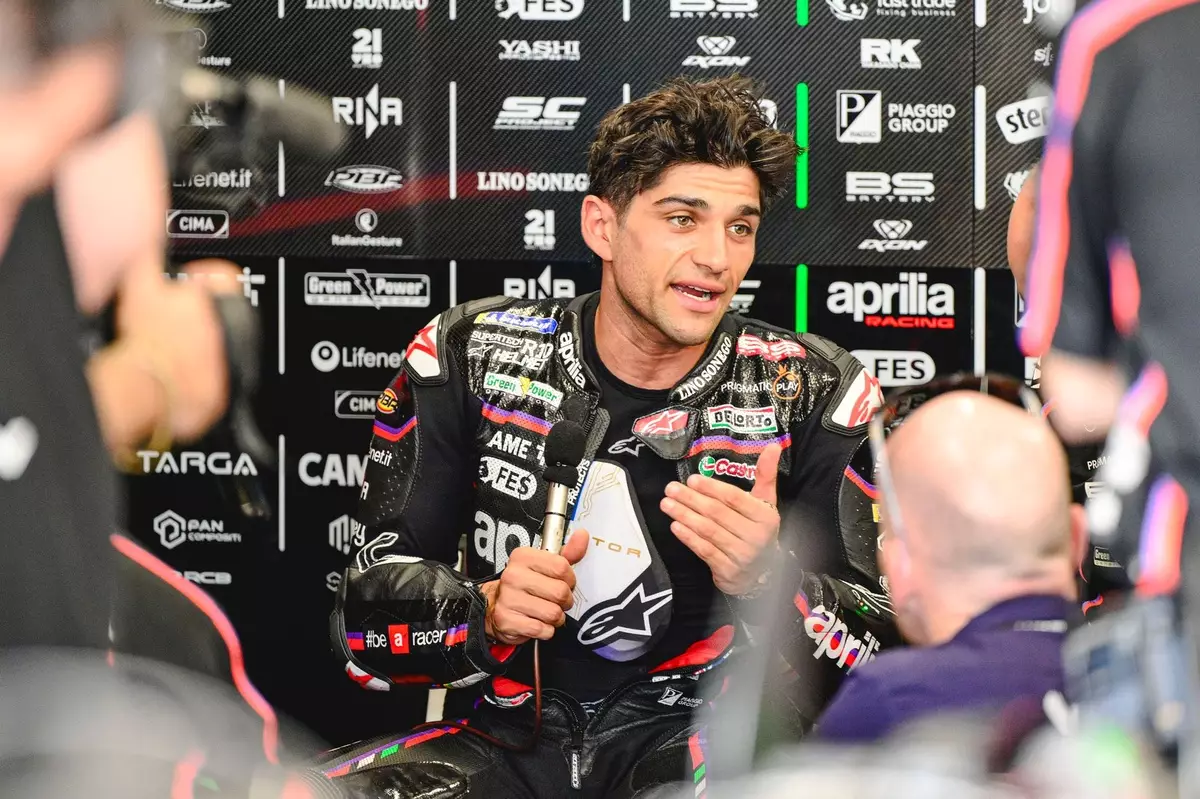Riding the Storm: Jorge Martin’s Contractual Turmoil with Aprilia
In the thrilling world of MotoGP, contracts are more than just legal agreements; they are reflections of dreams, ambitions, and sometimes the rollercoaster unpredictability of sports. Jorge Martin’s surprising choice to part ways with Aprilia before the 2025 season has created quite a stir among fans and insiders alike. This development, which initially seemed like a promising collaboration, has now turned into a complex situation, highlighting the fragile nature of balancing performance with contractual commitments in high-stakes racing.
At the core of this unfolding drama is an intriguing clause in Martin’s contract. It allows him the freedom to exit if he’s not among the top three riders after six races. This clause underscores the dual nature of competitive contracts in MotoGP—offering riders protection while simultaneously opening them up to questions about loyalty. When Martin proposed an extension post-injury, it seemed to tread a delicate line between good faith and strategic calculation. It raises questions about whether a rider’s dedication can truly be assessed through a performance clause alone.
Key Takeaways
- Jorge Martin’s contract with Aprilia includes a top-three performance clause.
- Injuries and missed opportunities have intensified perceptions of his decision to leave.
- The situation highlights broader implications within MotoGP’s team dynamics.
- Potential legal ramifications could distract from racing focus.
Injuries and Ambiguities
Add to this scenario Martin’s recent crash at his debut with Aprilia in Qatar. This unfortunate incident not only put him out of action but also cast doubts on his commitment to the team. Critics were quick to raise concerns about what they see as opportunistic timing. While there’s recognition of his valid worries regarding performance pressures, there’s also debate about whether a rider’s worth can be reduced to mere numbers after an injury-laden start to a season.

Aprilia’s decision to reject Martin’s tentative proposal to extend his contract clause further complicates matters. Both parties now face the challenge of preserving their public reputations while navigating complex team dynamics and issues of trust. The lack of public statements from either side adds fuel to speculation that behind-the-scenes negotiations might be ongoing, hinting that this conflict could extend beyond just what we see on the track.
The Balance of Power Insights and Consequences
This situation brings into focus wider issues within MotoGP, especially how teams manage their image and relationships with athletes. Aprilia’s leadership, particularly CEO Massimo Rivola, finds themselves under scrutiny for their handling of this situation. Critics may view their approach as short-sighted, especially given the significant investment made in securing Martin’s talents. For riders like Martin, future career prospects are always top-of-mind, making strategic decisions all the more critical.
On the flip side, one cannot ignore Martin’s own instincts for self-preservation. Is he already considering other opportunities if Aprilia fails to meet his terms? If rumors about other interested teams hold any truth, Aprilia faces a daunting task in ensuring they don’t lose their valuable asset altogether. In such a competitive field, losing a talented rider like Martin could significantly impact any team’s standing and strategy.
Navigating the Legal Labyrinth
If tensions escalate into legal disputes, the consequences could be far-reaching. Both riders and teams might find themselves tangled not only in public opinion but also legal intricacies that can detract from their primary focus—racing. While contractual disagreements aren’t new to MotoGP, venturing into court battles rather than conquering laps on track could overshadow both Martin’s and Aprilia’s reputations as they strive forward.

As spectators watch closely how this tension unravels, one lesson is evident: assuming that contracts inherently imply mutual respect and understanding is naive in a sport driven by speed and strategy with its fair share of unpredictability. Both Martin and Aprilia find themselves at a pivotal crossroad driven by conflicting interests and underlying tensions that go beyond typical performance metrics—putting them both in precarious positions within the dynamic world of MotoGP.
Final Thoughts
The unfolding saga between Jorge Martin and Aprilia serves as an intense reminder of how fragile partnerships can be in professional racing. Contracts are meant to secure futures but can also become battlegrounds for unexpected conflicts when expectations aren’t met or interests diverge. As fans continue to watch with bated breath, it remains crucial for both parties to find common ground—or risk letting these stormy waters impact their trajectories long after this season ends.
Jorge Martin
Aprilia
MotoGP
Racing Contracts


Leave a Reply